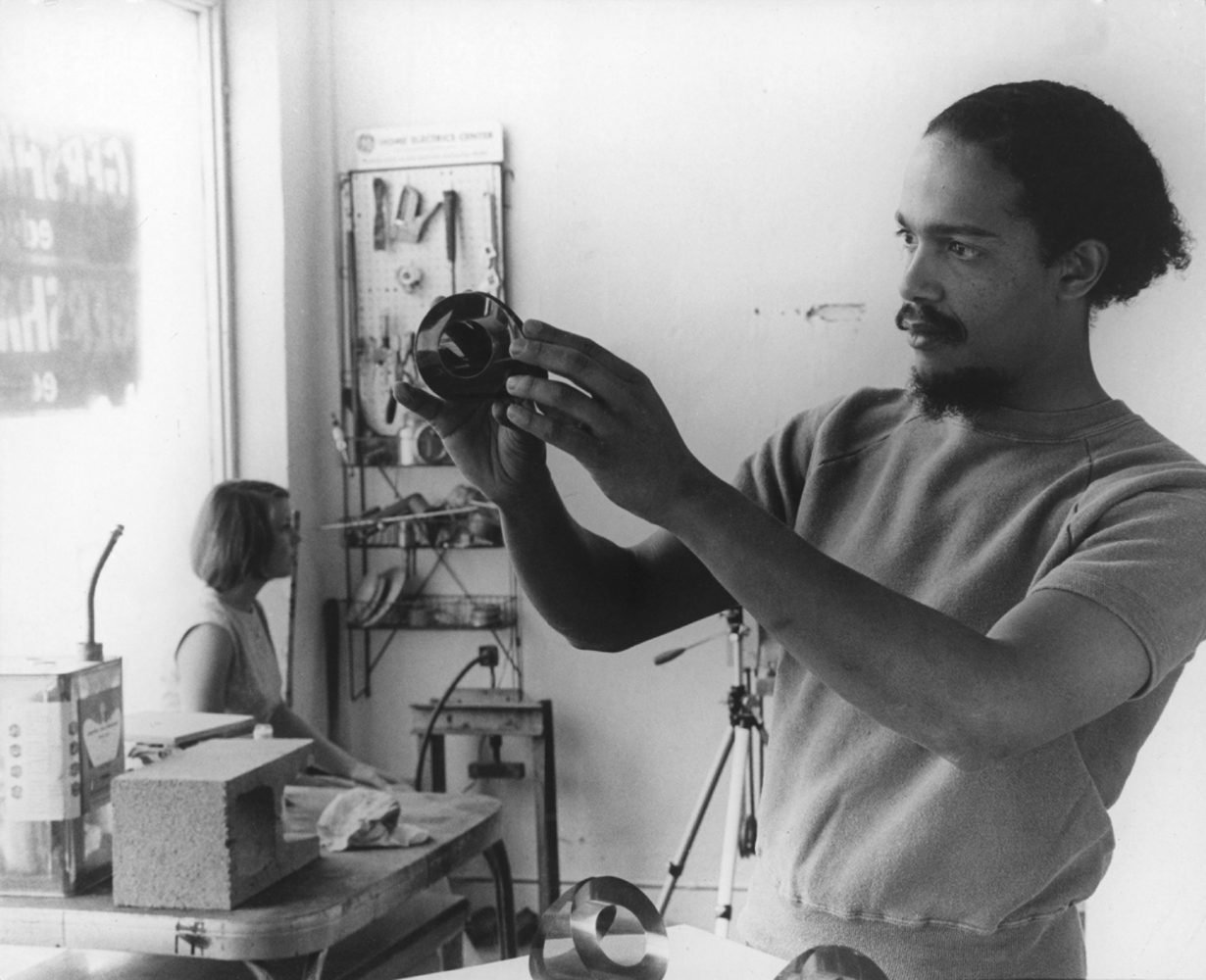
Fred Eversley, the former aerospace engineer who became a key figure in the Light and Space movement, has died. His pioneering use of plastic, polyester resin and industrial dyes was established in the cylindrical sculptures he made for his first solo show at the Whitney Museum of American Art in 1970. These were created by spinning liquid in concentric layers of dyed resin and utilising centrifugal forces in circular moulds affixed to a rotating lathe or turntable. The resulting casts were cut and polished into various shapes, with the sculptures growing in scale and ambition throughout the late 1960s and early 1970s.
In his previous career as an engineer, working with NASA and major aerospace companies, Eversley helped design high-intensity acoustical laboratories, which led to an interest in the parabola: the only shape that concentrates all forms of energy to a single focal point.
‘My work is all about energy, so playing with and pushing the boundaries of the parabola has been the focus of my work,’ Eversley noted. ‘The objects are made for spectators to amuse themselves by discovering all of the infinite combinations of internal reflections, refractions, colour changes and other optical phenomena that one can perceive within an individual piece of sculpture.’
Eversely’s work featured in the 2024 Art and Science Pacific Standard Time exhibition. Writing on the show for ArtReview, Claudia Ross notes: ‘At first glance, the Light and Space works on view feel refreshingly apolitical… Their materials and structures, though, illuminate the ways in which military technology has catalysed one thread of California Minimalism, shaping the foundations of perceptual art. Eversley’s rocketlike, columnal lenses were made from polyurethane resin initially used for military purposes, and many of Eversley’s sculptures are crafted on a 1940s-era “turntable” that originally casted nuclear bomb components.’